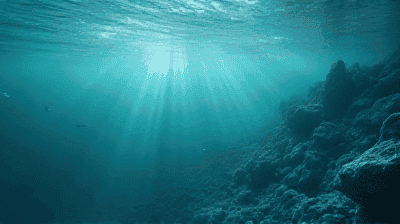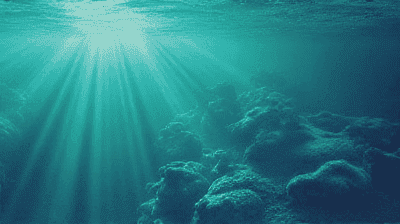The Silent Crisis: Why Ocean Deoxygenation is the Next Big Climate Threat
The world's oceans, often referred to as the lungs of the planet, play a crucial role in regulating climate and supporting life. While much attention has been focused on issues like climate change, plastic pollution, and overfishing, an insidious and growing threat is quietly unfolding beneath the waves: ocean deoxygenation. This phenomenon, characterized by the reduction of dissolved oxygen levels in seawater, poses significant risks to marine ecosystems and the services they provide. As the ocean becomes more depleted of oxygen, the consequences will reverberate through food webs, affect biodiversity, and ultimately impact human communities that rely on healthy oceans.
Understanding Ocean Deoxygenation
What is Ocean Deoxygenation?
Ocean deoxygenation refers to the reduction of dissolved oxygen in seawater, a critical component for the survival of most marine organisms. Oxygen is essential for respiration in fish, invertebrates, and other marine life. Normally, oxygen is replenished in the ocean through processes such as diffusion from the atmosphere, photosynthesis by phytoplankton, and the mixing of water masses. However, various factors are increasingly diminishing the levels of dissolved oxygen, leading to hypoxic (low oxygen) and anoxic (no oxygen) conditions.
Causes of Ocean Deoxygenation
The main drivers of ocean deoxygenation can be grouped into several categories:
1. Climate Change
Climate change is perhaps the most significant contributor to ocean deoxygenation. Key mechanisms include:
- Rising Sea Temperatures: Warmer waters hold less oxygen, leading to decreased oxygen levels in surface waters. Increased temperatures also enhance stratification, limiting mixing and reducing the replenishment of oxygen in deeper waters.
- Increased Stratification: As ocean waters warm, they become more stratified, meaning that layers of water do not mix. This stratification prevents oxygen-rich surface waters from reaching deeper layers, exacerbating oxygen depletion.
2. Nutrient Pollution
Nutrient pollution, primarily from agricultural runoff and wastewater, is another significant factor. Excessive nitrogen and phosphorus from fertilizers enter the oceans, leading to eutrophication—a process in which algal blooms grow excessively in nutrient-rich waters.
- Algal Blooms: These blooms can block sunlight, inhibiting the growth of other aquatic plants, and when they die and decompose, they consume large amounts of oxygen in the process, creating hypoxic zones.
- Dead Zones: Areas where oxygen levels are critically low, often referred to as “dead zones,” can form in coastal regions as a result of nutrient pollution. These zones can severely impact marine life, leading to fish kills and loss of biodiversity.
3. Ocean Circulation Changes
Changes in ocean circulation patterns due to climate change can disrupt the natural movement of oxygen through ocean waters.
- Reduced Upwelling: Upwelling zones, where nutrient-rich water rises to the surface, are vital for supporting marine life. Changes in wind patterns and sea temperature can weaken these currents, limiting the transport of oxygen to the depths of the ocean.
The Scale of the Problem
Ocean deoxygenation is not confined to specific regions; it is a global crisis affecting both coastal waters and the open ocean. Recent research has indicated that:
- Since the 1960s, oxygen levels in the upper layers of the ocean have decreased by approximately 2 percent, with some models predicting a potential decline of 4-18 percent by the end of the century.
- Hypoxic waters have expanded in size, with over 400 dead zones identified worldwide, affecting fisheries, marine biodiversity, and coastal economies.
Impacts of Ocean Deoxygenation
1. Threats to Marine Biodiversity
Decreased oxygen levels pose severe risks to marine life, particularly for species that are more sensitive to hypoxic conditions, including:
- Fish: Many fish species, especially those that require higher oxygen levels, may experience stress, impaired growth, and increased mortality rates in hypoxic environments. Species such as cod and herring are particularly vulnerable.
- Invertebrates: Organisms like shrimp, crabs, and mollusks are also affected by low oxygen levels, which can disrupt their reproductive success and survival.
- Coral Reefs: Coral reefs are especially sensitive to changes in oxygen levels. Deoxygenation can lead to bleaching events, increase susceptibility to diseases, and disrupt the balanced ecosystems that coral reefs support.
2. Disruption of Marine Food Webs
The impacts of deoxygenation extend beyond individual species; they can disrupt entire marine food webs.
- Plankton Communities: Phytoplankton, the base of the marine food web, rely on sufficient oxygen levels. Changes in oxygen can affect their growth and productivity, leading to cascading effects throughout the ecosystem.
- Trophic Interactions: As species struggle to survive, predator-prey relationships shift, potentially leading to overpopulation of certain species and decline or extinction of others. This imbalance can affect both biodiversity and fishery yields.
3. Economic Consequences
The economic implications of ocean deoxygenation are significant, particularly for communities that depend on healthy marine ecosystems.
- Fisheries: Fish populations may decline due to stress and mortality, leading to reduced catches and economic losses for fishing communities. The decline of popular fish species can also lead to increased competition for remaining stocks.
- Tourism: Tourist destinations that rely on marine biodiversity, such as coral reefs and vibrant fishing grounds, may see diminished appeal and economic viability as deoxygenation leads to habitat loss and declines in fish populations.
4. Ocean Carbon Cycle Dynamics
The ocean plays a crucial role in regulating the global carbon cycle. Ocean deoxygenation can disrupt this balance.
- Reduced Carbon Sequestration: Healthy marine ecosystems, particularly those with high oxygen levels, are more effective at sequestering carbon. Deoxygenation can weaken this function, leading to increased atmospheric CO2 levels and exacerbating climate change.
Monitoring Ocean Deoxygenation
1. Scientific Research and Data Collection
Understanding the scale and implications of ocean deoxygenation requires comprehensive research and monitoring efforts. Key methods include:
- Ocean Observing Systems: These systems collect data on oxygen levels, temperature, salinity, and other critical parameters across various ocean regions. They provide valuable insights into long-term trends and changes in oxygen levels.
- Satellite Monitoring: Remote sensing technologies can track algal blooms and other surface phenomena that indicate changes in oxygen dynamics. These tools enhance our understanding of regional and global patterns.
2. Citizen Science Initiatives
Engaging the public in monitoring efforts can raise awareness of ocean deoxygenation and empower individuals to contribute to data collection.
- Community-Based Programs: Local groups can participate in water sampling and monitoring activities, providing valuable data that researchers can analyze.
- Educational Outreach: Citizen science initiatives can educate communities about the significance of ocean health while fostering stewardship and advocacy.
Addressing Ocean Deoxygenation
1. Reducing Greenhouse Gas Emissions
Addressing the root causes of climate change is essential for mitigating ocean deoxygenation. Strategies include:
- Carbon Management: Implementing carbon capture and storage technologies can help reduce greenhouse gas emissions from industrial sources.
- Transitioning to Renewables: Investing in renewable energy sources can decrease reliance on fossil fuels and lower carbon emissions.
2. Managing Nutrient Pollution
Reducing nutrient inputs into coastal waters is critical for preventing eutrophication and supporting healthy marine ecosystems.
- Sustainable Agriculture: Implementing best management practices in agriculture, such as precision farming and reduced fertilizer use, can minimize nutrient runoff into waterways.
- Wastewater Treatment: Upgrading wastewater treatment facilities to remove excess nutrients before discharge can significantly reduce pollution entering the ocean.
3. Marine Protected Areas (MPAs)
Establishing and effectively managing marine protected areas can promote the recovery of marine biodiversity and enhance ecosystem resilience.
- Protecting Critical Habitats: MPAs can safeguard underwater habitats that support diverse marine life, allowing for greater resilience to the impacts of climate change and deoxygenation.
- Enhancing Biodiversity: By preserving habitats, MPAs can help sustain fish populations and promote healthier marine ecosystems.
4. Research and Policy Development
Investing in scientific research on ocean deoxygenation can inform policy decisions and support evidence-based management strategies.
- Cross-Disciplinary Collaboration: Promoting collaboration among scientists, policymakers, and stakeholders can lead to more effective management of marine resources.
- International Agreements: Strengthening global agreements on ocean conservation and climate action can facilitate coordinated efforts to address ocean deoxygenation.
Conclusion
Ocean deoxygenation is a silent but growing crisis that threatens marine ecosystems, biodiversity, and the livelihoods of communities dependent on healthy oceans. As the impacts of climate change and nutrient pollution compound, addressing this issue becomes increasingly urgent. Comprehensive monitoring, research, and proactive management strategies are essential to combatting this threat.
To ensure the health of our oceans for future generations, we must prioritize actions that reduce greenhouse gas emissions, manage nutrient pollution, establish marine protected areas, and invest in scientific research. By doing so, we can address the root causes of ocean deoxygenation and work toward restoring the vital ecosystems that sustain life on Earth.
The time to act is now. As stewards of our planet, we must rise to the challenge of combating ocean deoxygenation and safeguarding the precious resources of our oceans. Together, we can navigate this silent crisis and foster a healthier, more resilient marine environment.


